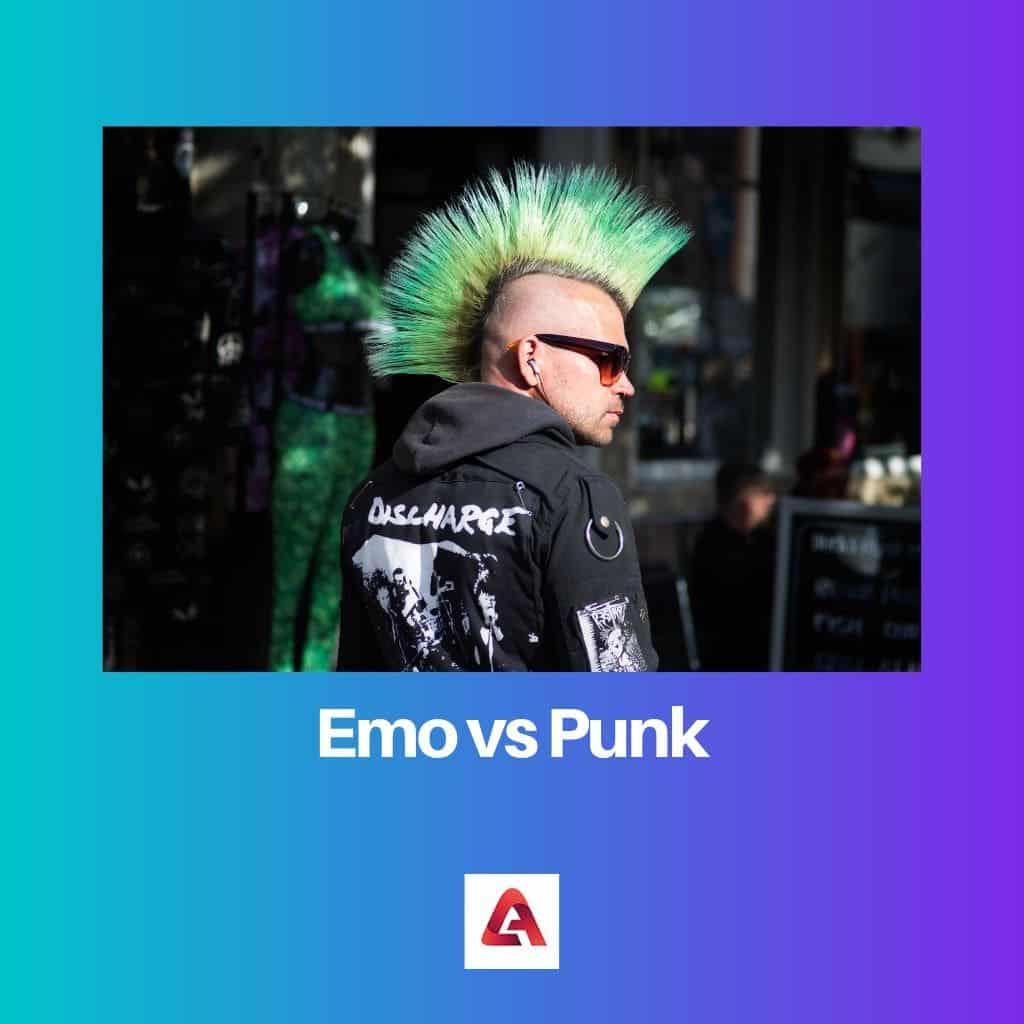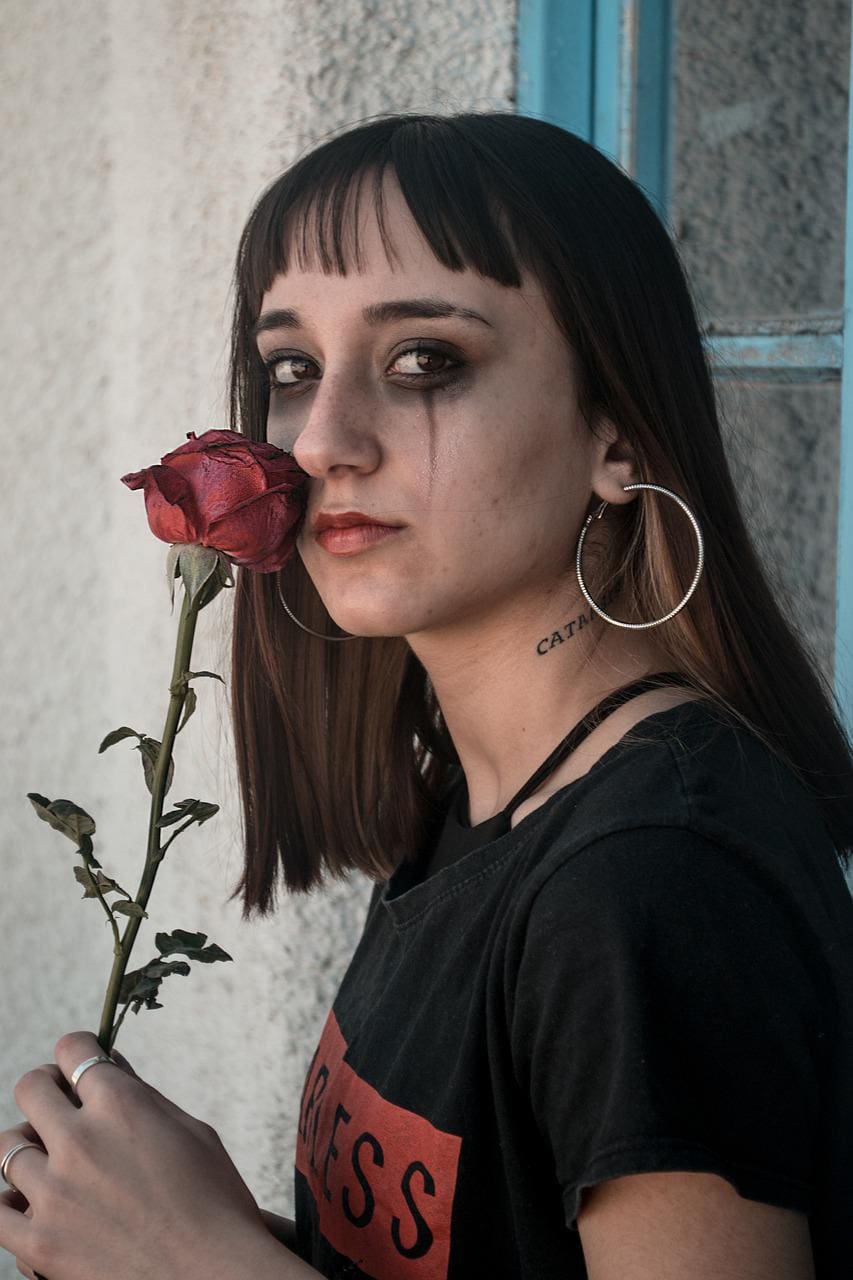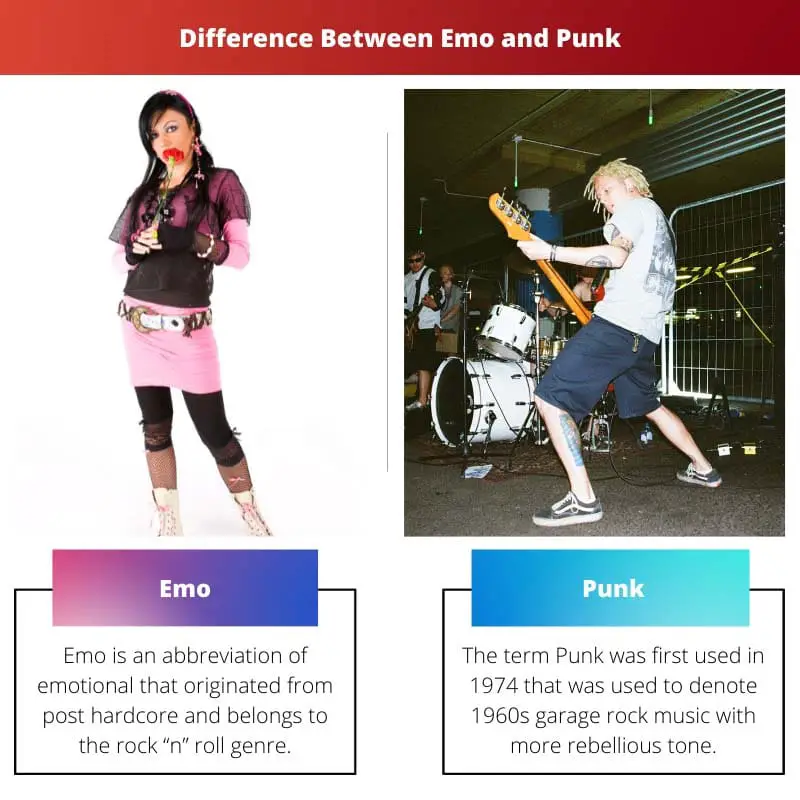When two 80s rock music lovers get together, a heated argument on what is better, Emo or Punk, follows. It has been about three decades since these music genres took shape. However, the debate never ends.
Key Takeaways
- Emo originated as a subgenre of punk music in the 1980s, characterized by emotional lyrics and introspective themes.
- Punk music emerged in the 1970s, featuring rebellious lyrics, fast-paced rhythms, and a DIY ethos.
- Fashion and subculture differences include Emo’s emphasis on dark clothing and a reflective attitude, while Punk showcases a more aggressive, anti-establishment stance.
Emo vs Punk
Emo is a music genre that is based on emotional lyrics and inward-looking themes. It is melodious, slow and deals with life experiences, personal growth, or self-discovery. Punk is aggressive and targets politics and societal norms. Punk music is characterized by its fast, rebellious, and loud sound.

Another crucial difference between the two is that Emo is more melodious, and although it originates in hard rock, it is now a blend of indie rock and pop punk. On the contrary, Punk music is louder and edgy, with short and fast-paced songs.
Emo’s roots originated from Indie rock and pop punk, whereas Punk originated from garage rock. Punk originated in 1974, whereas Emo almost a decade later, in the mid-1980s.
Punk is characterized by its unique fashion trend with ripped clothes that signified its rebellious cause.
Comparison Table
| Parameter of Comparison | Emo | Punk |
|---|---|---|
| Rooted in | Pop Punk, Indie Rock, Post-Hardcore | Garage Rock and Proto Punk |
| Originated in | Mid-1980s | 1974 |
| Nature | Emotional in Nature | Rebellious in Nature |
| Theme | Based on psychological factors and sensitive confessions | Based on political and social issues and against the government |
| Music type | Melodious music | Fast and edgy |
What is Emo?
Emo is an abbreviation of emotional that originated from post-hardcore and belonged to the rock “n” roll genre. This rock music genre attracted a wide fan base due to its musical tunes, although it had its roots in hard rock and punk music.
People considered emo are characterized by their quirky fashion in clothes and hairstyle. They wear tight outfits with printed band names and straight jet-black hair.
Studded belts, skinny jeans and tight t-shirts with band names printed on it is a signature for an emo kid.
The emo culture was popularized by bands such as Jawbreaker, The Promise Ring, The GetUp Kids, and Rites Of King in the early years of its origin.
Later bands Like My Chemical Romance, Fall Out Boys, and The Red Jumpsuit Apparatus defined emo music.
Emo was not just a music genre but also became a culture. People who were emo fans or followers of this culture were called “emo kids” or “emos”.
However, Emo lost its fan base by dismantling these famous bands.
With the advent of emo rappers, this genre was rediscovered by rappers like XXXTenatcion, Juice WRLD, and Lil Peep in 2010. Emo is considered a progressive music genre that uses a fusion of guitar, dynamic song structure and unorthodox lyrics.

What is Punk?
Punk was first used in 1974 to denote 1960s garage rock music but with a much more rebellious tone. Punk rock slowly emerged into a movement worldwide within the next two years that was used to voice concerns against authoritarian rules.
This ideology also inspired punk fashion, and people who were followers of punk culture were seen sporting t-shirts with offensive quotes, leather jackets, spiked jewellery and studded accessories.
They were argumentative of the mainstream culture and used their lyrics to protest.
Punk rock music was initially popularized by Sex Pistols, The Clash, The Damned, The Runaways, The Saints, The Ramones, Patti Smith and many more.
Later Punk emerged as a faster and edgier version of itself and inspired other subgenres like post-punk, new wave, Indie rock, alternative rock and noise rock.
Punk rock was related to anti-political scenarios, and the punk rock bands sported hard-edgy music that was crisp and fast-paced. Bands such as Green Day and Rancid took punk rock to the next level during the 1990s.
The Punk revolution in music is considered a crucial event in music history.

Main Differences Between Emo and Punk
- The main difference between Emo and Punk is that Emo is emotional and deals with psychological issues, whereas Punk is rebellious and deals with political and social issues.
- Another crucial difference is that Emo is melodious and less edgy, while Punk is louder and edgy, with short and fast-paced songs.
- Emo is an abbreviation of emotional that originated from post-hardcore and belonged to the rock “n” roll genre. Whereas first used in 1974 to denote 1960s garage rock music but with a much more rebellious tone.
- The emo culture was popularized by bands such as Jawbreaker, The Promise Ring, and The GetUp Kids. In contrast, Sex Pistols, The Clash, The Damned, The Runaways, etc., initially popularized Punk rock music.
- Emo fans wore very tight outfits with printed band names and straight jet-black hair, whereas punk culture was seen sporting t-shirts with offensive quotes, leather jackets, spiked jewellery and studded accessories.






